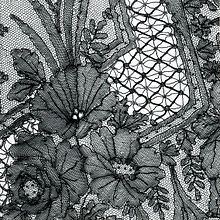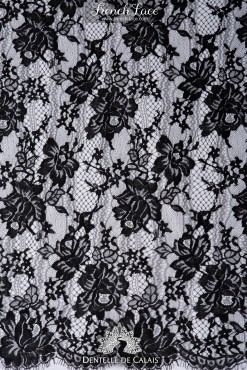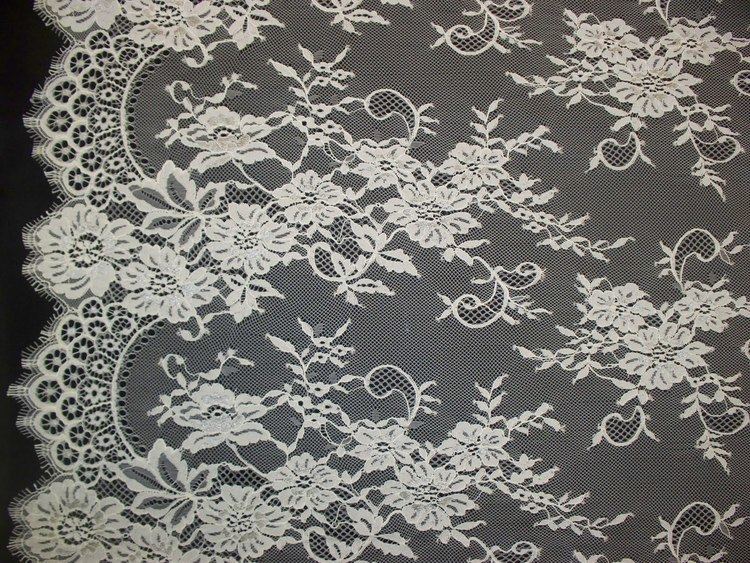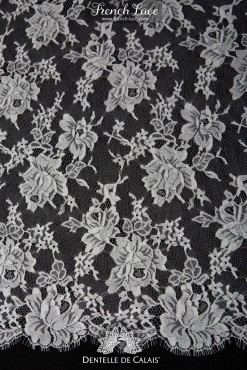 | ||
Big bopper chantilly lace
Chantilly lace is a handmade bobbin lace named after the city of Chantilly, France, in a tradition dating from the 17th century, though the most famous are silk laces introduced in the 18th century. Though called Chantilly lace, most of the lace bearing this name was actually made in Bayeux in France and Geraardsbergen, now in Belgium.
Contents

Chantilly lace is known for its fine ground, outlined pattern, and abundant detail. The pattern is outlined in cordonnet, a flat untwisted strand. The best Chantilly laces were made of silk, and were generally black, which made them suitable for mourning wear. White Chantilly lace was also made, both in linen and silk, though most Chantilly laces were made of silk. The black silk Chantilly lace became especially popular, and there was a large market for it in Spain and the Americas. Chantilly and the Spanish laces (such as Blonde lace) were the most popular black laces. Little white Chantilly was ever made. Another notable thing about Chantilly lace is the use of a half-and-whole stitch as a fill to achieve the effect of light and shadow in the pattern, which was generally of flowers. The background, or réseau, was in the form of a six pointed star, and was made of the same thread as the pattern, unlike the otherwise similar Blonde lace. The lace was produced in strips approximately four inches wide, and then joined with a stitch that left no visible seam.

Chantilly lace remained popular in the 19th century, when every fashionable lady had a black or white Chantilly shawl, made in Brussels or Ghent.

Big bopper chantilly lace
History

In the 17th century, the Duchesse de Longueville organised the manufacture of lace at Chantilly. It has been produced from then until the present day. It became popular because of the duchesse's patronage and Chantilly's proximity to Paris and came into fashion again during the reigns of Louis XV and Louis XVI; it was a special favorite of Louis XV's last mistress, Mme du Barry, and of Marie Antoinette. When the French Revolution began in 1789, demand for the lace ceased. The lace-makers were seen as protégés of the royals, and after Mme du Barry and Marie Antoinette were guillotined in 1793, the lace-makers of Chantilly were themselves killed. At this point production ceased.

Napoleon I sponsored revivals of Chantilly lace, most especially between the years 1804 and 1815. At this point production was concentrated in Normandy, mainly around the Bayeux area. While it was no longer being made in Chantilly, all of the old techniques and designs were used. Chantilly lace reached the height of its popularity around 1830 and was revived again in the 1860s, at which point it was made at Bayeux as well as at Geraardsbergen, in Belgium.

In 1844, a machine was patented that made Valenciennes lace and black silk Chantilly lace that was difficult to distinguish from the handmade lace.
